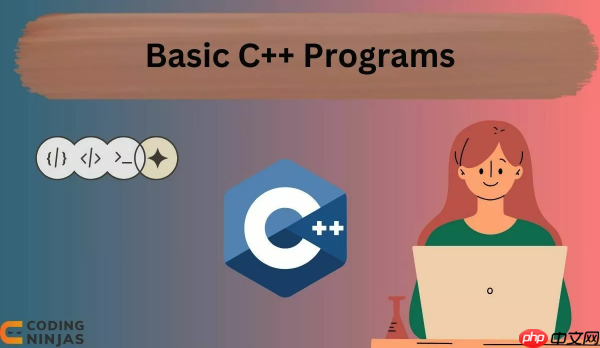要让C++结构体高效转移资源,必须定义移动构造函数和移动赋值运算符,通过窃取右值资源并置空源对象指针,避免深拷贝开销,实现高性能资源管理。

在C++中,结构体的移动语义与右值引用是性能优化的关键,尤其当结构体内部管理着动态分配的资源时。简单来说,它允许我们“偷取”临时对象(右值)的资源,而不是进行昂贵的深拷贝,从而实现资源的高效转移,大大减少不必要的内存分配和释放开销。这对于构建高性能、资源敏感的C++应用来说,几乎是不可或缺的。
要让C++结构体能够利用移动语义,核心在于为其定义移动构造函数(Move Constructor)和移动赋值运算符(Move Assignment Operator)。当一个临时对象(右值)被用来初始化或赋值另一个对象时,编译器会优先选择调用这些移动操作,而不是传统的拷贝操作。这就像你搬家时,与其把所有家具都重新买一套,不如直接把旧家具搬到新家,这样既省钱又省力。
我们来看一个具体的例子,假设我们有一个
MyString
#include <iostream>
#include <vector>
#include <cstring> // For strlen, strcpy, etc.
#include <utility> // For std::move, std::exchange
// 一个简单的结构体,拥有动态分配的C风格字符串
struct MyString {
char* data;
size_t length;
// 默认构造函数
MyString() : data(nullptr), length(0) {
std::cout << "MyString() default constructor @ " << this << std::endl;
}
// 接收C风格字符串的构造函数
MyString(const char* s) : length(s ? std::strlen(s) : 0) {
std::cout << "MyString(const char*) constructor @ " << this << std::endl;
data = new char[length + 1];
if (s) {
std::strcpy(data, s);
} else {
data[0] = '\0';
}
}
// 析构函数:释放资源
~MyString() {
std::cout << "~MyString() destructor @ " << this << std::endl;
delete[] data;
}
// 拷贝构造函数:深拷贝
MyString(const MyString& other) : length(other.length) {
std::cout << "MyString(const MyString&) copy constructor @ " << this << std::endl;
data = new char[length + 1];
std::strcpy(data, other.data);
}
// 拷贝赋值运算符:深拷贝
MyString& operator=(const MyString& other) {
std::cout << "MyString& operator=(const MyString&) copy assignment @ " << this << std::endl;
if (this != &other) {
delete[] data; // 释放旧资源
length = other.length;
data = new char[length + 1];
std::strcpy(data, other.data);
}
return *this;
}
// 移动构造函数:窃取资源
MyString(MyString&& other) noexcept : data(other.data), length(other.length) {
std::cout << "MyString(MyString&&) move constructor @ " << this << std::endl;
other.data = nullptr; // 关键:将源对象的指针置空,防止二次释放
other.length = 0;
}
// 移动赋值运算符:窃取资源
MyString& operator=(MyString&& other) noexcept {
std::cout << "MyString& operator=(MyString&&) move assignment @ " << this << std::endl;
if (this != &other) { // 尽管移动赋值中自赋值不常见,但仍是好习惯
delete[] data; // 释放当前对象的旧资源
data = other.data; // 窃取资源
length = other.length;
other.data = nullptr; // 将源对象的指针置空
other.length = 0;
}
return *this;
}
const char* c_str() const {
return data ? data : "";
}
};
// 返回MyString的函数,通常会触发移动语义或RVO
MyString create_string(const char* s) {
MyString temp(s);
return temp; // 编译器通常会进行RVO/NRVO,否则会调用移动构造
}
int main() {
std::cout << "--- 传统拷贝示例 ---" << std::endl;
MyString s1("Hello"); // 调用MyString(const char*)
MyString s2 = s1; // 调用拷贝构造函数
MyString s3;
s3 = s1; // 调用拷贝赋值运算符
std::cout << "s1: " << s1.c_str() << std::endl;
std::cout << "s2: " << s2.c_str() << std::endl;
std::cout << "s3: " << s3.c_str() << std::endl;
std::cout << "\n--- 移动语义示例 ---" << std::endl;
MyString s4 = create_string("World"); // 这里通常会发生RVO,否则是移动构造
std::cout << "s4 after create_string: " << s4.c_str() << std::endl;
MyString s5;
s5 = std::move(s4); // 显式调用移动赋值运算符
std::cout << "s5 after move from s4: " << s5.c_str() << std::endl;
std::cout << "s4 after move (should be empty): " << (s4.c_str() ? s4.c_str() : "nullptr") << std::endl;
std::cout << "\n--- std::vector与移动语义 ---" << std::endl;
std::vector<MyString> vec;
vec.reserve(3); // 预留空间,避免不必要的重新分配
std::cout << "push_back一个临时对象..." << std::endl;
vec.push_back(MyString("C++")); // 临时对象,会调用移动构造函数
std::cout << "push_back一个函数返回的临时对象..." << std::endl;
vec.push_back(create_string("Move")); // 函数返回的右值,通常会移动构造
MyString temp_str("Semantics");
std::cout << "push_back一个显式std::move的对象..." << std::endl;
vec.push_back(std::move(temp_str)); // 显式将左值转换为右值引用,调用移动构造
std::cout << "Vector contents:" << std::endl;
for (const auto& s : vec) {
std::cout << "- " << s.c_str() << std::endl;
}
std::cout << "Original temp_str after move: " << (temp_str.c_str() ? temp_str.c_str() : "nullptr") << std::endl;
std::cout << "\n--- End of main ---" << std::endl;
return 0;
}上面的代码展示了
MyString
std::move(s4)
s4
data
立即学习“C++免费学习笔记(深入)”;
我个人觉得,对于那些内部管理着堆内存、文件句柄、网络连接或其他稀缺资源的大型结构体来说,移动语义的引入简直是“雪中送炭”。传统的拷贝操作(拷贝构造函数和拷贝赋值运算符)通常会执行“深拷贝”,这意味着它会为所有内部资源重新分配内存,然后将源对象的内容逐一复制过来。
试想一下,如果你的
MyString
std::vector<LargeObject>
push_back
erase
LargeObject
而移动语义则完全不同。它不复制资源,而是转移资源的所有权。当一个右值(通常是即将销毁的临时对象)被用作源对象时,它的内部资源可以直接被“嫁接”到目标对象上,然后源对象的资源指针被置空,防止其析构函数重复释放资源。这就像是把一个硬盘从一台电脑拔下来,直接插到另一台电脑上,而不是把硬盘里的所有数据都复制一份。这种零开销的资源转移,对于性能敏感的场景来说,带来的提升是立竿见影的。特别是在容器(如
std::vector
正确实现移动构造函数和移动赋值运算符,是让你的结构体能够高效利用移动语义的关键。这并非仅仅是把拷贝操作里的
const MyString&
MyString&&
移动构造函数 (Move Constructor):
它的基本形式是
MyStruct(MyStruct&& other) noexcept;
other
data
other
nullptr
other
// 移动构造函数示例
MyString(MyString&& other) noexcept : data(other.data), length(other.length) {
std::cout << "MyString(MyString&&) move constructor @ " << this << std::endl;
other.data = nullptr; // 将源对象的指针置空
other.length = 0;
}这里我习惯性地加上
noexcept
std::vector
移动赋值运算符 (Move Assignment Operator):
它的基本形式是
MyStruct& operator=(MyStruct&& other) noexcept;
a = std::move(a)
if (this != &other)
以上就是C++结构体移动语义 右值引用应用实例的详细内容,更多请关注php中文网其它相关文章!

每个人都需要一台速度更快、更稳定的 PC。随着时间的推移,垃圾文件、旧注册表数据和不必要的后台进程会占用资源并降低性能。幸运的是,许多工具可以让 Windows 保持平稳运行。

Copyright 2014-2025 https://www.php.cn/ All Rights Reserved | php.cn | 湘ICP备2023035733号